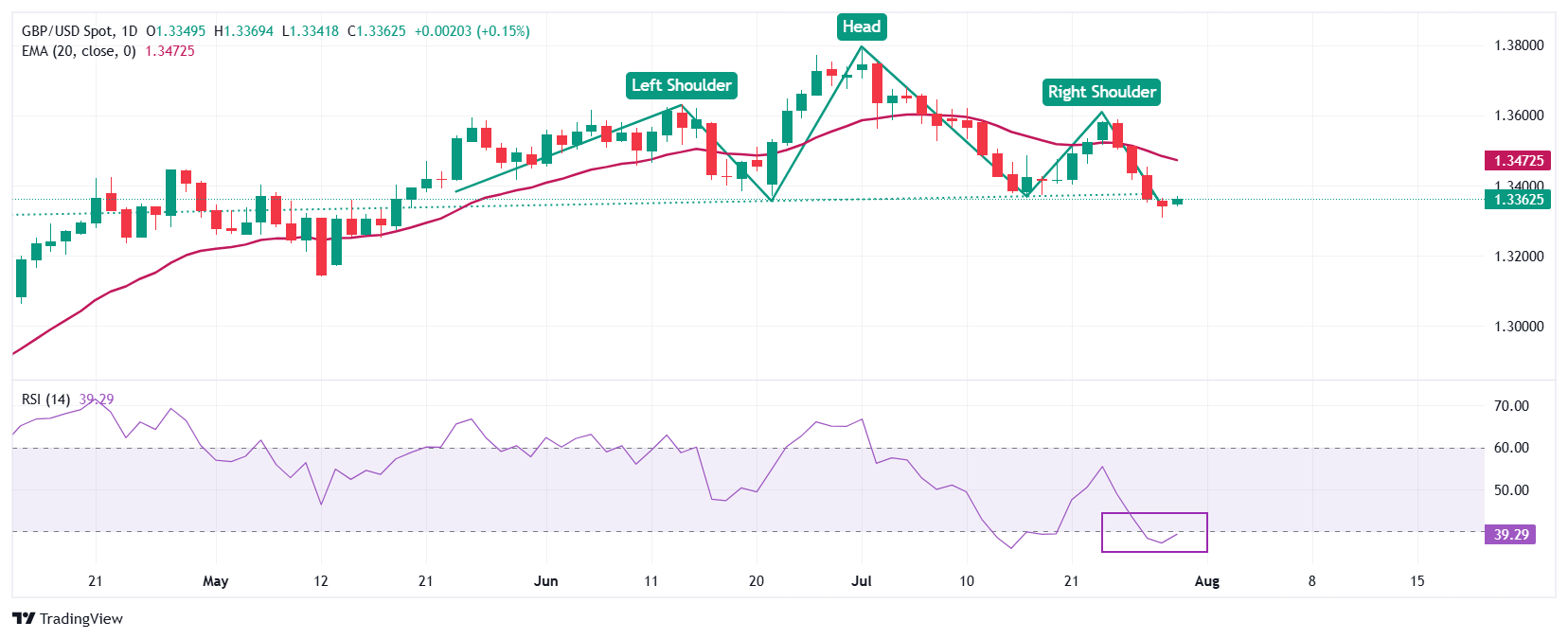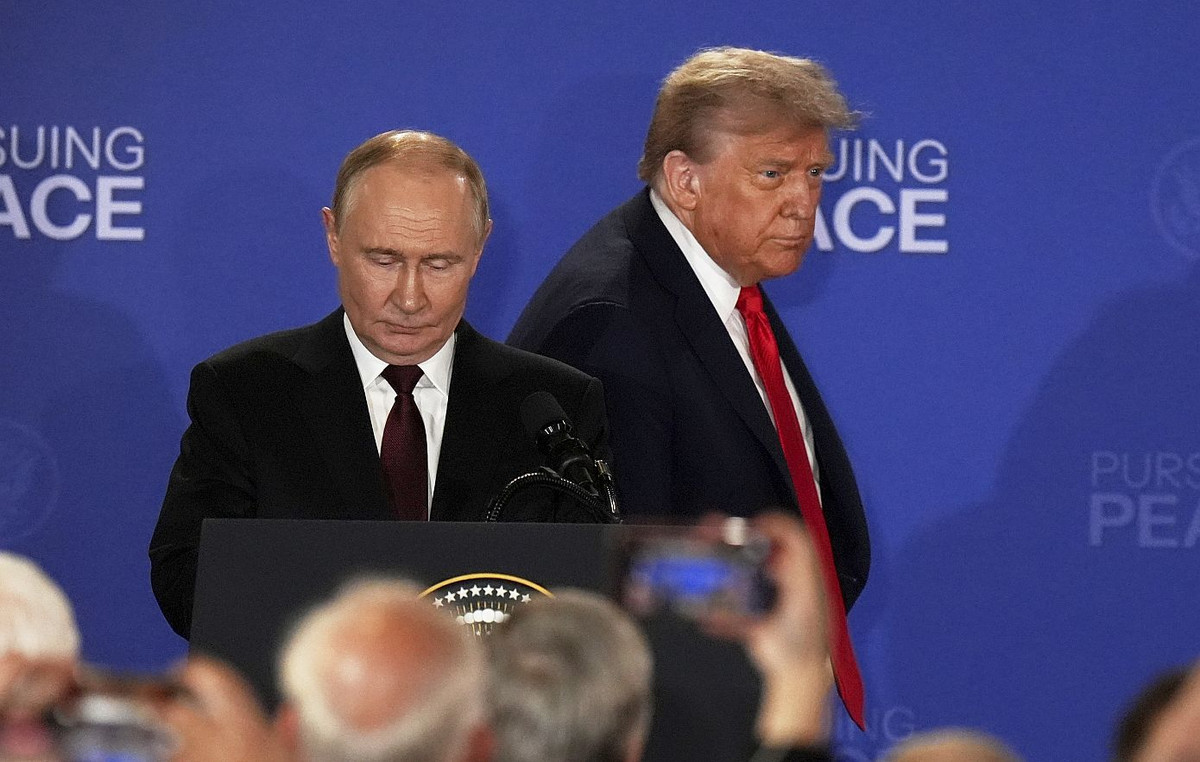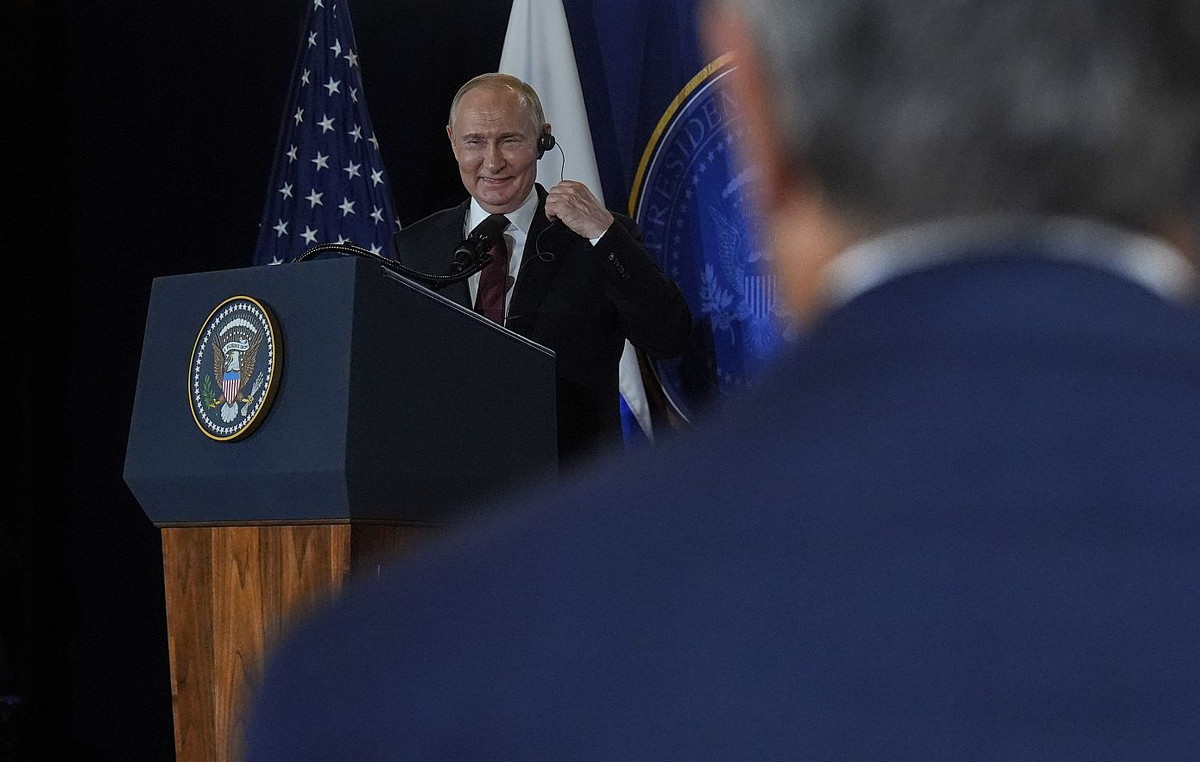- The sterling pound is about 1,3350 against the US dollar, while investors expect the Fed monetary policy announcement.
- Investors expect the Fed to maintain interest rates without changes.
- A deceleration in the United Kingdom’s labor demand paves the way for more trimming of interest rates by the BOE.
The sterling pound (GBP) is quoted with caution about 1,3350 against the US dollar (USD) during the Wednesday’s European negotiation session, while investors wait for the announcement of the Federal Reserve Monetary Policy (FED) at 18:00 GMT.
At the time of writing, the American dollar index (DXY), which follows the value of the dollar against six main currencies, clings to profits near the new monthly maximum of 99.00 registered on Tuesday.
According to the CME Fedwatch tool, bond markets are almost completely discounting that the Fed will maintain stable interest rates in the range of 4.25%-4.50%. This would be the fifth consecutive policy meeting in which the US Central Bank will maintain interest rates at the current levels.
Investors will pay special attention to the press conference of the president of the FED, Jerome Powell, in search of new clues about the monetary policy perspectives for the rest of the year. It is expected that at least two of the 12 members of the Federal Open Market Committee (FOMC), the Vice President of Supervision of the Fed, Michelle Bowman, and Governor Christopher Waller, support the reduction of interest rates. Before the period of silence, both policy formulators argued in favor of a reduction of rates as soon as this month, citing downward risks for the labor market.
On the contrary, other officials affirmed that there should be no hurry for trimming of interest rates, since the impact of tariffs imposed by Washington to several imports has begun to be reflected in prices. The June Consumer Price Index (IPC) also showed that the prices of products that are largely imported in the US have increased in part due to taxes.
What moves the market today: the sterling pound is flattened in front of its peers
- The sterling pound is almost flat in front of its main peers, except the Japanese Yen (JPY), Wednesday. The British currency is expected to remain under pressure in the medium term, since the Bank of England (BOE) is almost certain that it will cut the interest rates in the monetary policy meeting next week.
- The operators have become increasingly confident that the BOE will reduce their key interest rates on August 7, since the conditions of the United Kingdom labor market (UK) have cooled, after an increase in employers’ contributions to social security schemes.
- The last survey of the Confederation of the British Industry (CBI) showed on Monday that household spending has decreased due to a deceleration in labor demand. The agency reported that retail sales fell for the tenth consecutive month in July. However, the rhythm of the fall in retail sales was less severe than seen in June.
- In the US, investors will also focus on the preliminary gross domestic product (GDP) of the second quarter and the Personal Consumption Expenditure Price Index (PCE), as well as on ADP employment change data for July, which will be published during the North American session.
- The data is expected to show that the economy grew 2.4% after contracting 0.5% in the first quarter of the year. Meanwhile, it is expected that the inflation of the underlying PCE, which is the inflation indicator preferred by the Fed, has grown at a more moderate rate of 2.4% compared to the 3.5% increase seen in the previous quarter.
- Economists expect the US private sector to have added 78,000 new workers in July, after the fall of 33,000 observed in June.
Technical Analysis: The sterling pound staggers above 1,3300

The sterling pound struggles to maintain the immediate support of 1,3300 against the US dollar on Wednesday. The short -term trend of the GBP/USD torque remains bassist, since the 20 -day exponential mobile average (EMA) descends to 1,3473.
The formation of a graphic and shoulder graphic pattern (H&S) also suggests that the general trend is bassist. The H&S formation line line is drawn about 1,3413.
The 14 -day relative force (RSI) index ranges below 40.00, indicating that the bassist impulse is intact.
Looking down, the minimum of May 12, 1,3140 will act as a key support zone. On the positive side, the maximum of July 1 around 1,3790 will act as a key barrier.
LIBRA ESTERLINA – FREQUENTLY QUESTIONS
The sterling pound (GBP) is the oldest currency in the world (886 AD) and the official currency of the United Kingdom. It is the fourth most commercialized currency exchange unit (FX) in the world, representing 12% of all transactions, with an average of $ 630 billion a day, according to data from 2022. Its key commercial peers are GBP/USD, which represents 11% of FX, GBP/JPY (3%) and EUR/GBP (2%). The sterling pound is issued by the Bank of England (BOE).
The most important factor that influences the value of sterling pound is the monetary policy decided by the Bank of England. The Bank of England bases its decisions itself has achieved its main objective of “price stability”: a constant inflation rate of around 2%. Its main tool to achieve this is the adjustment of interest rates. When inflation is too high, the Bank of England will try to control it by raising interest rates, which makes access to credit for people and companies more expensive. This is generally positive for sterling pound, since higher interest rates make the United Kingdom a more attractive place for global investors to invest their money. When inflation falls too much it is a sign that economic growth is slowing down. In this scenario, the Bank of England will consider lowering interest rates to reduce credit, so that companies will borrow more to invest in projects that generate growth.
Published data measure the health of the economy and can affect the value of sterling pound. Indicators such as GDP, manufacturing and services PMI and employment can influence the direction of the sterling pound.
Another important fact that is published and affects the pound sterling is the commercial balance. This indicator measures the difference between what a country earns with its exports and what you spend on imports during a given period. If a country produces highly demanded export products, its currency will benefit exclusively from the additional demand created by foreign buyers seeking to buy those goods. Therefore, a positive net trade balance strengthens a currency and vice versa in the case of a negative balance
Source: Fx Street
I am Joshua Winder, a senior-level journalist and editor at World Stock Market. I specialize in covering news related to the stock market and economic trends. With more than 8 years of experience in this field, I have become an expert in financial reporting.







